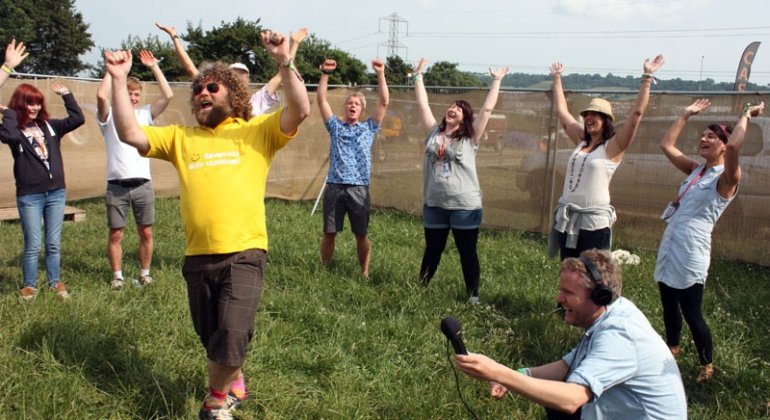Hasya yoga, commonly referred to as laughter yoga, is a type of exercise that incorporates laughter with yoga breathing methods. It was created in 1995 by a physician by the name of Madan Kataria, who was motivated by the work …
Read more →Hasya Yoga (Laughter Yoga)
Mindfulness is a therapeutic mental state achieved by focusing on the present moment and accepting one’s feelings, thoughts, and bodily sensations without judgment (Baer, 2003). This ancient Eastern philosophy-based practice has been adapted and integrated into various Western psychological therapies …
Read more →Hasya yoga, also known as laughter yoga, is a form of exercise that incorporates laughter, deep breathing, and yoga-like stretches. Dr. Madan Kataria, a medical doctor, created it in India in 1995 as a way to improve physical and mental …
Read more →Laughter therapy, also known as laughter yoga, is a type of complementary therapy that uses spontaneous laughter to improve physical and emotional health (Madhuri & Ratna, 2017). It consists of a series of activities and exercises designed to promote laughter …
Read more →Laughter is a universal and natural human behavior with numerous physical and mental health benefits. It has been identified as a potent tool for enhancing well-being and reducing the negative effects of stress and other health conditions such as cancer. …
Read more →Laughter is a universal and contagious emotion that has received a great deal of attention in the field of psychology. According to Provine (2000), laughter is a contagious social phenomenon that is triggered by the presence of others and has the ability to activate the brain’s reward system and release dopamine, a neurotransmitter associated with pleasure and reward.
What is it about laughter that makes it so contagious?
Laughter has physical consequences in addition to its social effects. Strack, Martin, and Stepper (1988) discovered that hearing someone else laugh can cause a mirroring effect in our own bodies, resulting in the activation of facial muscles involved in laughter. This physical reaction can strengthen our bonds with others and foster a sense of shared experience.
Individuals and groups can benefit from laughter in a variety of ways. Individuals can benefit from laughter by improving their mood, reducing stress, and increasing their overall well-being (Ford, 2014). It can also improve cardiovascular health and strengthen the immune system (Hodgson, 2004). Laughter can improve communication and social connections in groups, creating a sense of belonging and camaraderie (Schoel & Niedenthal, 2010).
What are the potential benefits of this phenomenon?
Laughter has also been shown to be a natural form of pain relief. Endorphins, which are natural chemicals that help to reduce pain and improve overall well-being, are released by our bodies when we laugh (Lyubomirsky, 2013). This is especially useful for managing chronic pain and improving overall health.
Overall, the contagious nature of laughter has the potential to positively impact those around us. As a result, it is critical to cultivate opportunities for laughter and to fully experience and enjoy this positive emotion.
Always laugh when you can. It is cheap medicine
LORD BYRON
References:
Ford, S. (2014). The health benefits of laughter. Psychology Today. https://www.psychologytoday.com/us/blog/brain-babble/201401/the-health-benefits-laughter
Hodgson, P. (2004). Laughter and cardiovascular health. The British Journal of General Practice, 54(502), 574-575.
Lyubomirsky, S. (2013). The how of happiness: A scientific approach to getting the life you want. Penguin.
Provine, R. (2000). Laughter. American Scientist, 88(4), 38-45.
Schoel, C., & Niedenthal, P. M. (2010). Emotional contagion and empathy: A social psychological perspective. In J. T. Cacioppo, L. G. Tassinary, & G. G. Berntson (Eds.), Handbook of psychophysiology (3rd ed., pp. 517-541). Cambridge University Press.
Strack, F., Martin, L. L., & Stepper, S. (1988). Inhibiting and facilitating conditions of the human smile: A nonobtrusive test of the facial feedback hypothesis. Journal of Personality and Social Psychology, 54(5), 768-777.






